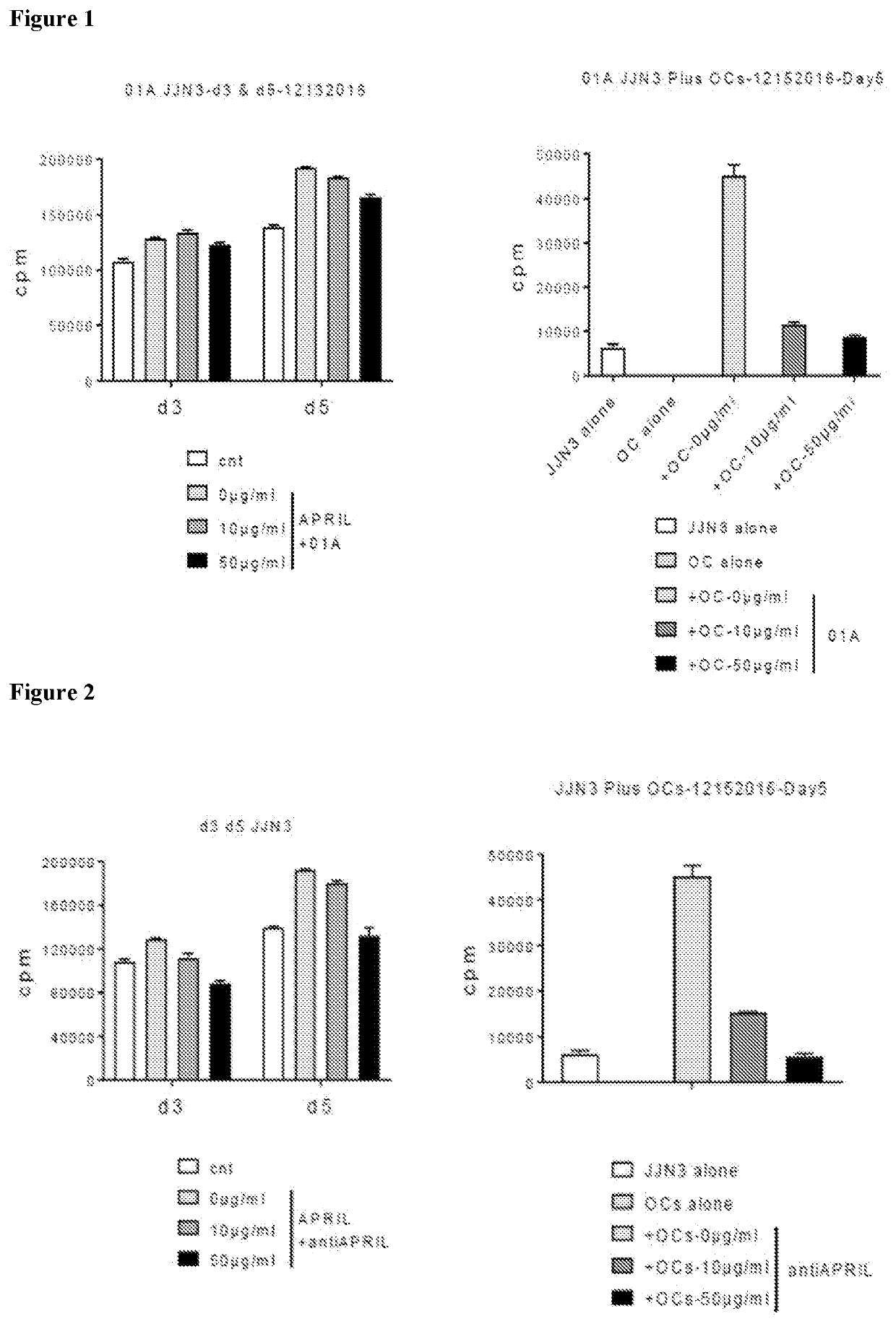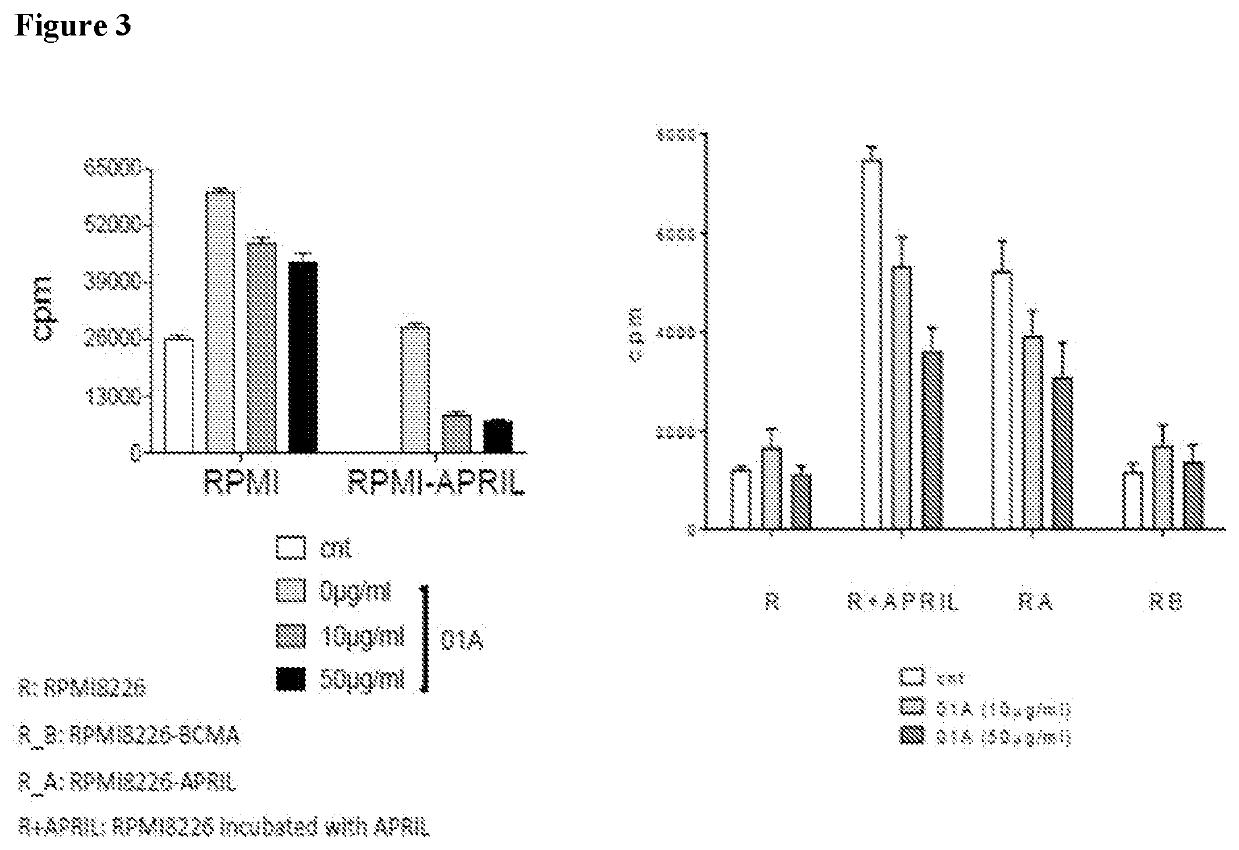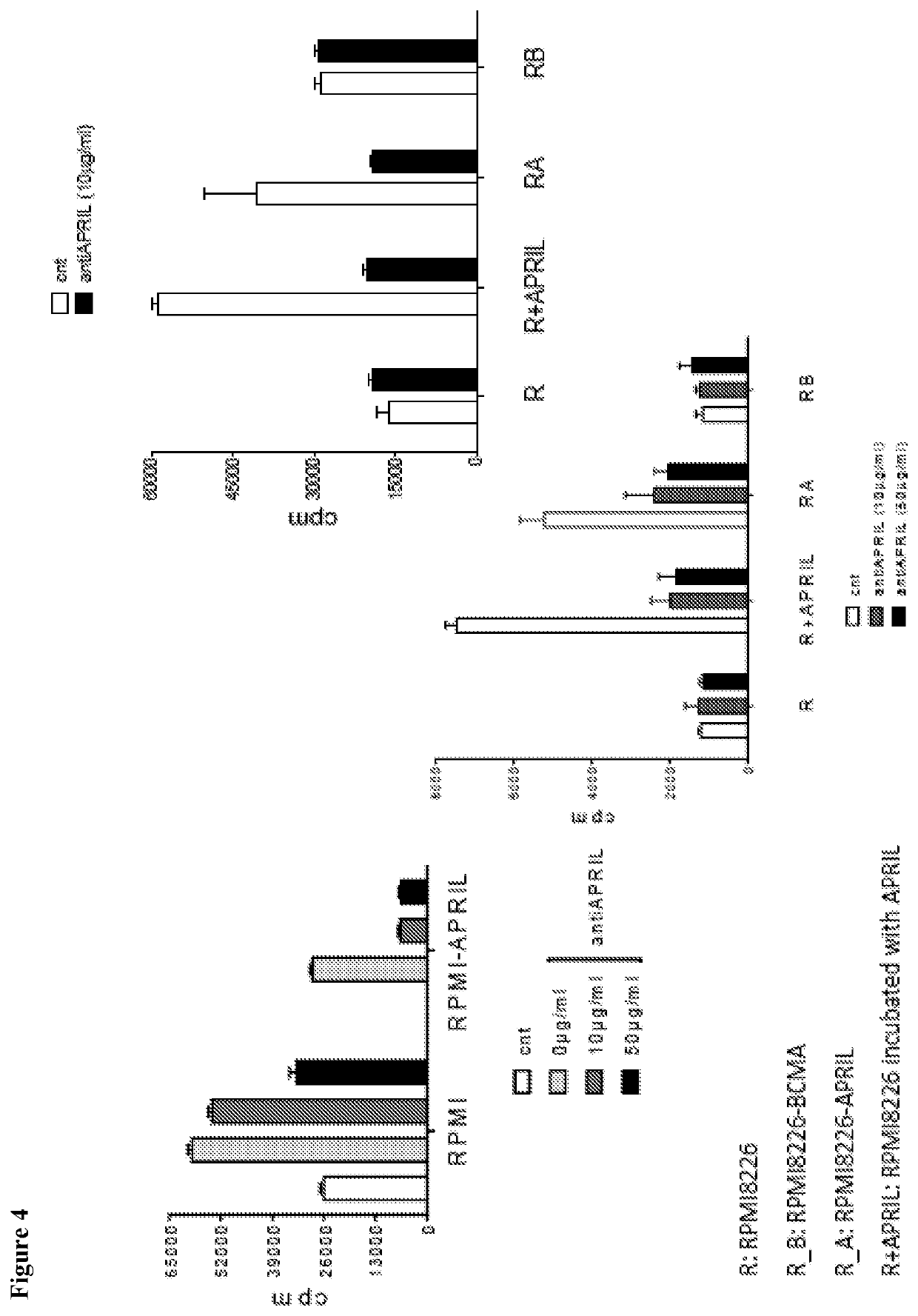Methods for modulating regulatory t cells, regulatory b cells, and immune responses using modulators of the april-taci interaction
a technology of april and april, which is applied in the field of modulating regulatory t cells, regulatory b cells, and immune responses, can solve the problems of difficult to distinguish, unsatisfactory characterization of the regulatory mechanism of mm-related immune cell dysfunction, and the proportion of circulating functional tregs, so as to promote immunosuppression, reduce oc-induced immune suppression in the tumor microenvironment, and promote survival and immune inhibitory function.
- Summary
- Abstract
- Description
- Claims
- Application Information
AI Technical Summary
Benefits of technology
Problems solved by technology
Method used
Image
Examples
example 1
and Methods for Examples 2-10
[0457]a. T cell purification and isolation
[0458]Human T Cell Enrichment Cocktail (RosetteSep™, STEMCELL) was used to purify T cells from PB of donors and MM patients. T cells were further separated into conventional T cells (Tcon, CD4+CD25−) and T regulatory cells (Treg, CD4+CD25+) by anti-CD25 microbeads (Miltenyi Biotec) and FACS sorting on CD25high population. The anergic and suppressive features of CD4+CD25+ regulatory T cells were further confirmed by their inhibition on Tcon proliferation stimulated with CD3 / CD28 microbeads. Tregs were cultured in RPMI-1640 with 10% FBS and 5 ng / ml IL-2 (Sigma) unless otherwise mentioned.
b. Cell Lines and Primary Cells
[0459]All human MM cell lines were grown in RPMI-1640 with 10% FBS, 100 U / ml penicillin and 100 μg / ml streptomycin. Healthy donor and MM patient samples were obtained after informed consent was provided. Written informed consent was obtained in all cases according to the Declaration of Helsinki. Monon...
example 2
g Regulatory T and B Cell Numbers and / or Inhibitory Immune Function
[0470]The role of regulatory T cells (Tregs) in mediating immune responses has been studied in a variety of immunological contexts, such as the relationship between Treg function and CD38 levels (Feng et al. (2017) Clin. Cancer Res. 23:4290-4300). However, it has been challenging to identify genes and pathways that are selectively expressed by immune cell populations and modify such genes and pathways in order to selectively modulate immune cell numbers and / or immune activity of subsets of immune cell populations.
[0471]It has been determined herein that the interaction between APRIL and one of its receptors, TACI, modulates regulatory T cen B cell numbers and / or inhibitory immune and that modulating the APRIL / TACI interaction can modulate immune responses in a number of contexts (FIGS. 1-34). For example, TACI is significantly expressed on Tregs, such as CD4+CD25highFoxP3high Tregs, when compared with conventional T ...
example 3
y T Cells (Tregs) Express Significantly Higher TACI than Paired Conventional T (Tcon)
[0480]To define a potential immune regulation of APRIL on T cells which lack BCMA expression, the TACI protein levels, as mean fluorescence intensities (MFIs), were assessed using flow cytometry analysis, on the cell membrane of T cell subsets harvested from MM patients. Among T cells freshly isolated from peripheral blood (PB) or bone marrow (BM) aspirates of MM patients (n=47), CD4+(and CD8+) CD25high T cells have >3-5-fold higher TACI expression than CD4+(and CD8+) CD25low T cells (FIG. 33). Significantly higher TACI levels were also observed on CD4+(and CD8+) CD25low T cells than CD4+(and CD8+) CD25− conventional T (Tcon). TACI is hardly detected on Tcons since MFIs for TACI and isotype control are almost superimposed. In contrast to Tcons (CD4+CD25−), regulatory T cells (Treg, CD4+CD25+Foxp3+) express the highest TACI levels (FIG. 34). CD8 Tregs, CD8+CD25+Foxp3+ cells which are functionally sup...
PUM
| Property | Measurement | Unit |
|---|---|---|
| volume | aaaaa | aaaaa |
| size | aaaaa | aaaaa |
Abstract
Description
Claims
Application Information
 Login to View More
Login to View More - R&D
- Intellectual Property
- Life Sciences
- Materials
- Tech Scout
- Unparalleled Data Quality
- Higher Quality Content
- 60% Fewer Hallucinations
Browse by: Latest US Patents, China's latest patents, Technical Efficacy Thesaurus, Application Domain, Technology Topic, Popular Technical Reports.
© 2025 PatSnap. All rights reserved.Legal|Privacy policy|Modern Slavery Act Transparency Statement|Sitemap|About US| Contact US: help@patsnap.com



